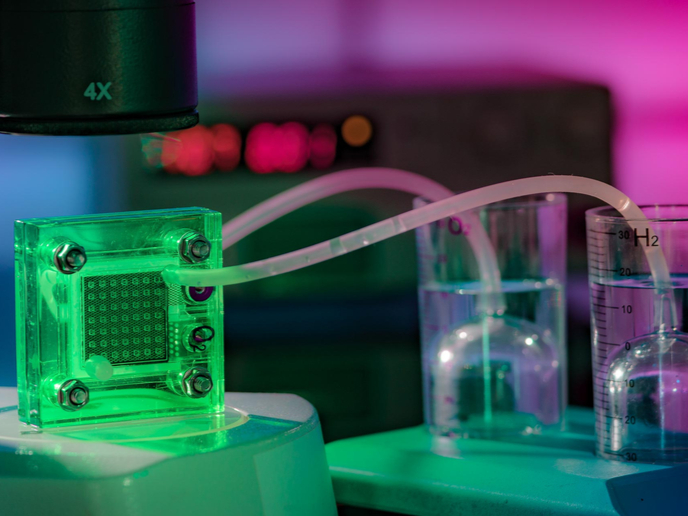Using intrinsically fragile catalysts to generate and use chemical fuels
The global transition to sustainable energy requires the development of robust, highly active, and scalable catalysts. A catalyst is a substance that increases the rate of a chemical reaction without undergoing any permanent chemical change itself. Take for example the production of hydrogen, a zero-carbon fuel that can be used for vehicles or heat production. The electrolyser that produces hydrogen from water and electricity and the fuel cells that convert hydrogen back into electricity typically use precious metals as a catalyst. However, their limited abundancy and issues with sustainable sourcing have proven to be a major roadblock to the widespread use of hydrogen. Unfortunately, alternative catalysts based on more sustainable metals fail to provide the stability these applications demand. What is needed is a new approach to the catalyst conundrum – which is where the EU-funded REDOX SHIELDS (Protection of Redox Catalysts for Cathodic Processes in Redox Matrices) project comes in. “Popular thinking is that chemical energy conversion requires a robust catalyst,” says principal investigator Nicolas Plumeré(opens in new window), a professor at the Technical University of Munich(opens in new window). “This project, which received support from the European Research Council(opens in new window), aims to demonstrate that the opposite is also true, that intrinsically fragile catalysts can be applied to generate and use chemical fuels.” To do this, Plumeré established an innovative electron-conducting polymeric matrix to protect even the most fragile catalysts, such as the hydrogenase, nature’s catalyst for hydrogen production or oxidation. The innovative system is used for water electrolysis, the electrochemical reaction where water (H2O) is transformed into H2 and O2. The challenge here is that the released O2 can damage the hydrogenases, essentially causing them to quickly become inactive. “Our system addresses this issues by leveraging the released H2 and using it to protect the catalyst against the disactivating effects of O2,” explains Plumeré. “This protection is also effective in fuel cells by using H2 from the fuel feed.”
Several important breakthroughs
Using this novel matrix, Plumeré was able to achieve several important breakthroughs. These include, for example, the theoretical demonstration that minimal protection matrices offer quasi-infinite protection to the catalyst – even when that catalyst is the very fragile hydrogenase. “This opens the door to the possibility of being able to protect the hydrogenase from oxygen for as long as 20 000 years, according to theoretical predictions,” remarks Plumeré. “From a practical perspective, this means that degradation by oxygen can be completely prevented without having to sacrifice catalyst loading or catalytic performance.” Next, researchers showed how hydrogenase can be operated in the presence of air, such as its use in a fuel cell for converting hydrogen into electricity. “This breakthrough showed that hydrogenases have the potential to remain active in oxygen for over a week, whereas in the past this enzyme would deactivate in just minutes,” adds Plumeré.
A competitive alternative to fossil fuels
According to Plumeré, the project’s findings are directly applicable to devices in the context of biotechnology and solar fuel generation. As a result, the project helps position the source renewable energies as a competitive alternative to fossil fuels. “The REDOX SHIELDS project successfully showcased that catalyst fragility does not preclude its use in applications,” concludes Plumeré. “As such, I am confident that our findings will have a big impact on the way the chemical energy conversion community designs new molecular and biological catalysts for chemical fuel generation.”







